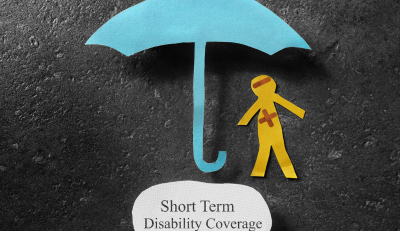Federal Employee Disability Pay: What You Need to Know
What Happens if You Can’t Work Due to a Disability?
Have you ever thought about what would happen if you became too sick or injured to work? As a federal or postal employee, you may qualify for federal employee disability pay through the Federal Employees Retirement System (FERS). This benefit provides financial support when a medical condition prevents you from performing your job.
What Is Federal Employee Disability Pay?
FERS disability pay offers income protection to federal and postal workers who can no longer perform their job duties due to a medical condition. This benefit helps ensure financial stability when you need it most.
Unlike Social Security Disability Insurance (SSDI), FERS disability retirement does not require you to be totally disabled. Instead, you must be unable to do your specific job.
Who Qualifies for Federal Disability Pay?
To receive FERS disability retirement, you must meet the following requirements:
- Work History: You must have at least 18 months of creditable civilian federal service.
- Medical Condition: Your disability must be expected to last at least one year and prevent you from performing your job duties.
- Agency Certification: Your employer must confirm that it cannot accommodate your condition or reassign you to a similar role at the same pay level.
- SSDI Application: You must apply for Social Security Disability Insurance (SSDI), even though FERS approval does not depend on SSDI approval.
If you meet these requirements, you may be eligible for federal employee disability pay through FERS.
How Much Will You Receive?
The amount of disability pay depends on your high-3 average salary (your highest three consecutive years of basic pay) and how long you’ve been receiving benefits.
Here’s how it works:
- First Year: You receive 60% of your high-3 average salary, minus any SSDI benefits.
- After the First Year: The benefit drops to 40% of your high-3 salary, minus 60% of any SSDI benefits.
Example Calculation
If your high-3 average salary is $60,000:
- Year 1: $60,000 × 60% = $36,000 per year (or $3,000 per month) before SSDI deductions.
- After Year 1: $60,000 × 40% = $24,000 per year (or $2,000 per month) before SSDI deductions.
These payments provide steady income while you adjust to your new situation.
How to Apply for FERS Disability Pay
Applying for federal employee disability pay involves several steps. To avoid delays, it’s crucial to complete each step correctly.
Step 1: Complete the Required Forms
You must fill out:
- SF 3107 (Application for Immediate Retirement)
- SF 3112 (Documentation in Support of Disability Retirement)
These forms provide the necessary details about your employment and medical condition.
Step 2: Collect Medical Evidence
You will need medical documentation that clearly explains your condition. This should include statements from your doctors describing how your disability prevents you from doing your job.
Step 3: Get Your Agency’s Certification
Your federal agency must confirm:
- Your condition cannot be accommodated in your current position.
- There is no similar position available at the same grade and pay level.
Step 4: Submit Your Application
Send your completed application to the Office of Personnel Management (OPM) for review. The approval process can take several months. To improve your chances, ensure all required documents are accurate and complete.
What Happens After Approval?
If your application is approved, your disability payments will begin. However, you must meet ongoing requirements, including:
- Annual Medical Updates: OPM may require proof that your disability still prevents you from working.
- Income Limits: If you earn more than 80% of your previous federal salary in a new job, your benefits could stop.
Key Considerations for Federal Employees
Here are a few additional things to keep in mind:
- Health Insurance Coverage: You can keep your Federal Employees Health Benefits (FEHB) coverage if you were enrolled for at least five years before retirement.
- Survivor Benefits: Your spouse or dependents may receive benefits if you pass away while receiving FERS disability pay.
- Retirement Conversion: At age 62, your FERS disability benefit converts to a regular retirement benefit based on your total years of service.
Need Help with Your Application?
The FERS disability retirement process can be complicated. Missing a step or submitting incomplete paperwork can delay your benefits. If you need help, consider reaching out to federal disability specialists who can guide you through the process.
For more detailed information, visit Federal Disability Coverage and get expert assistance with your claim today.







